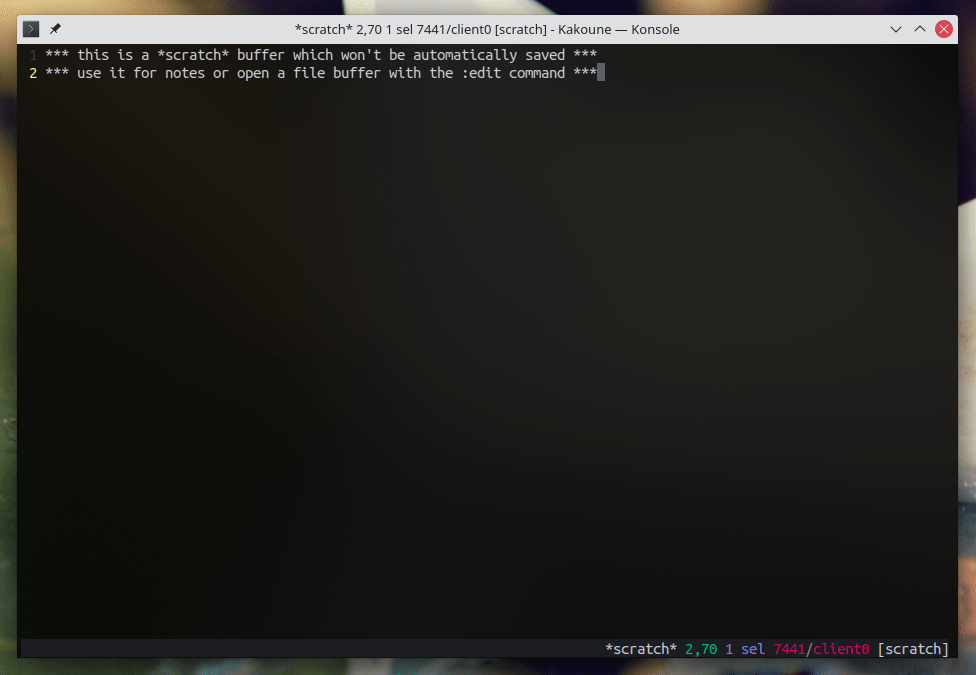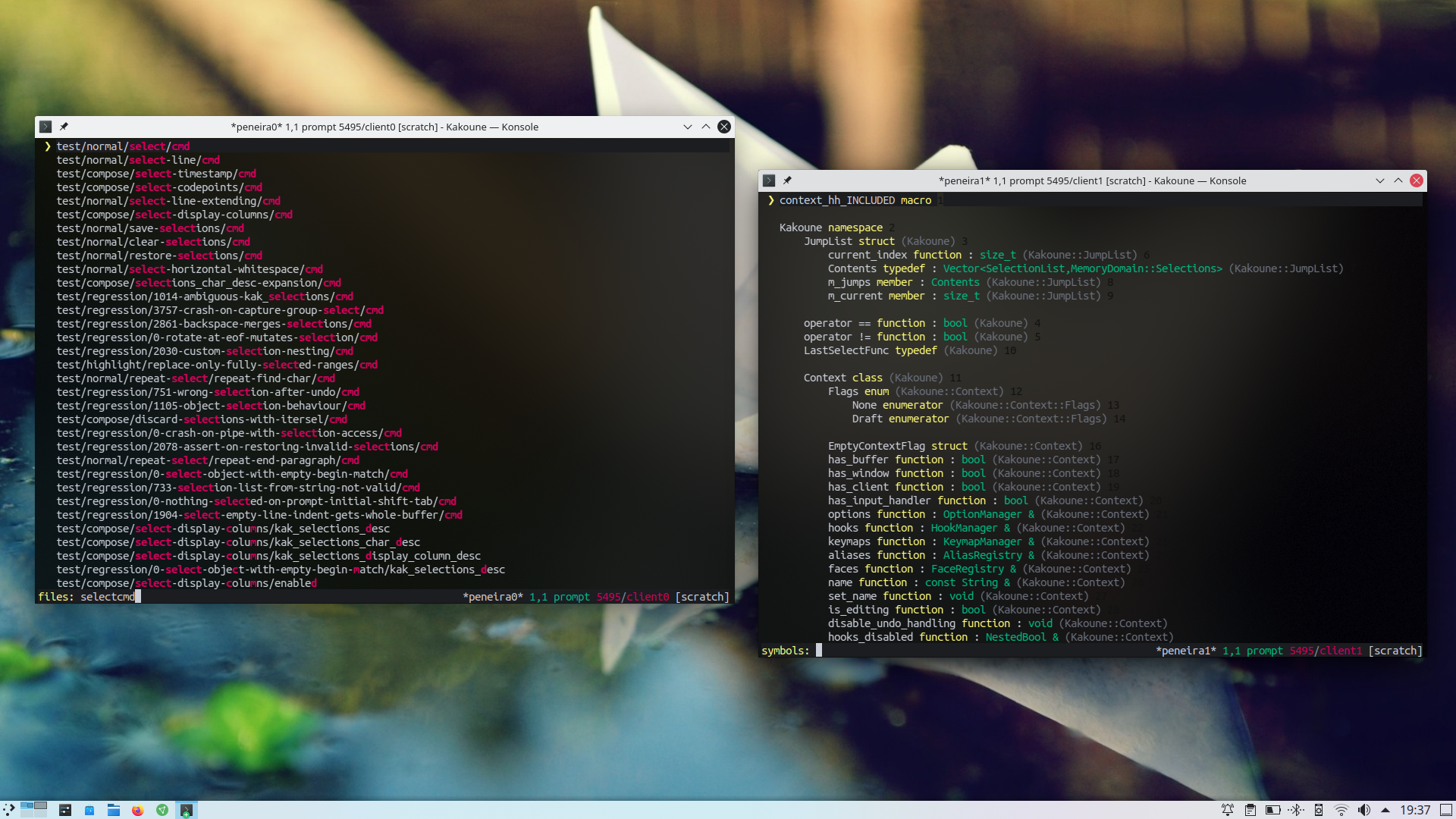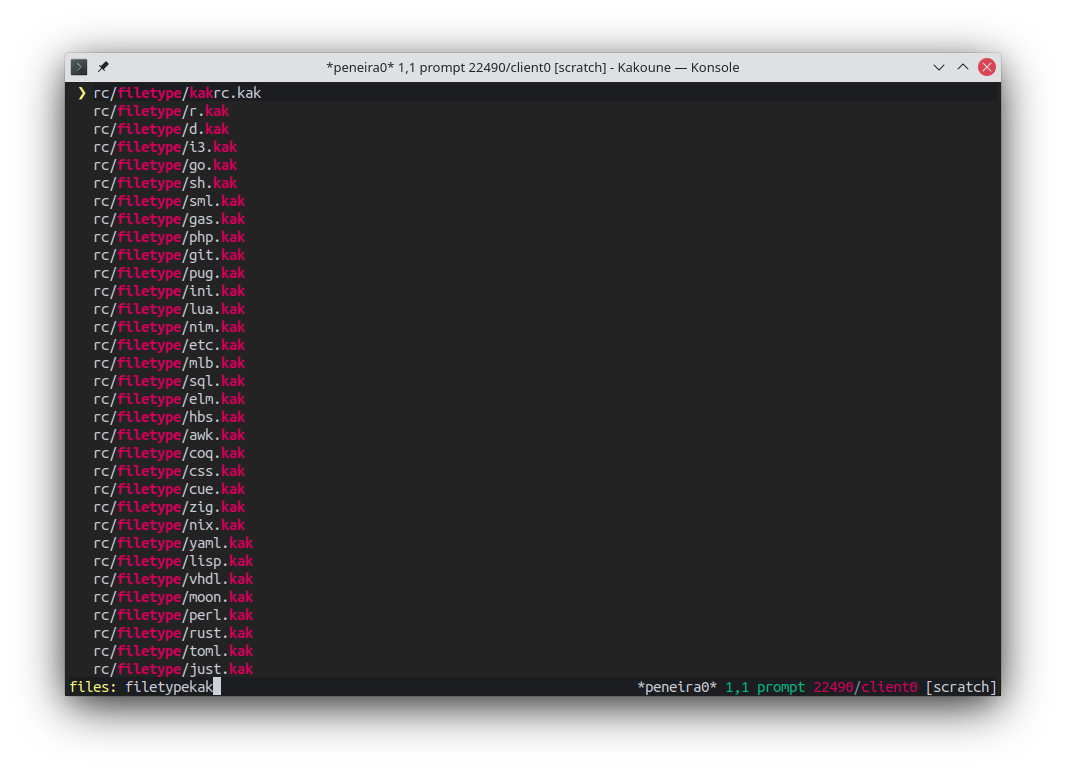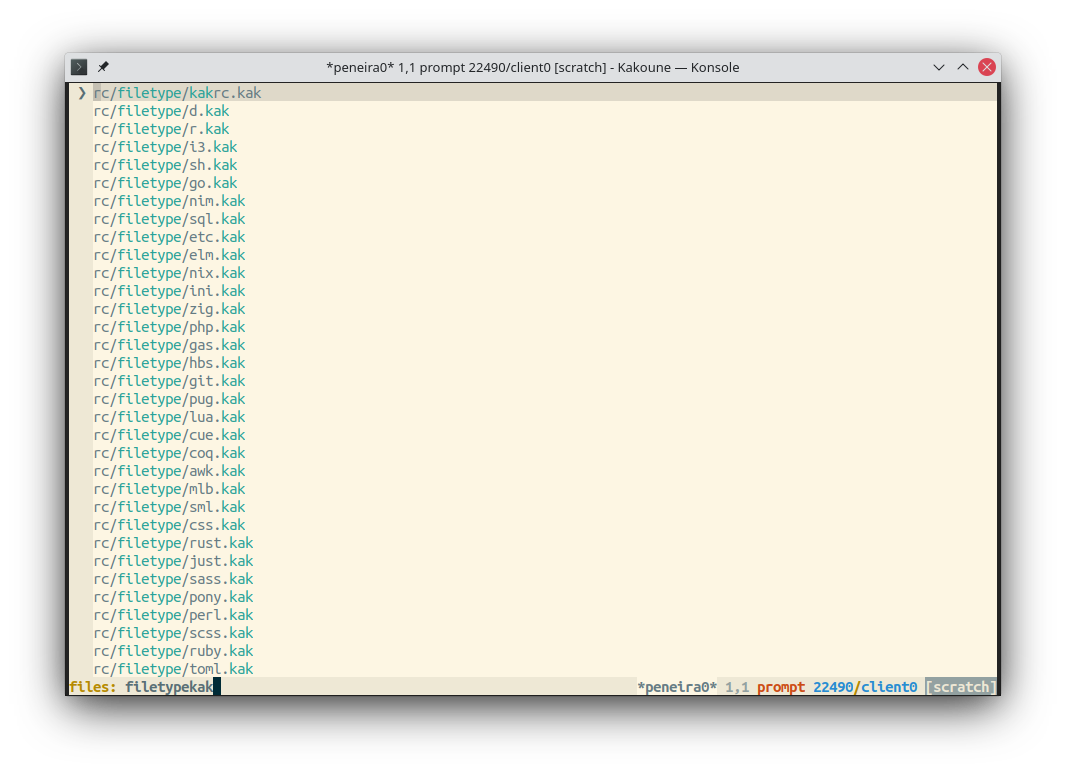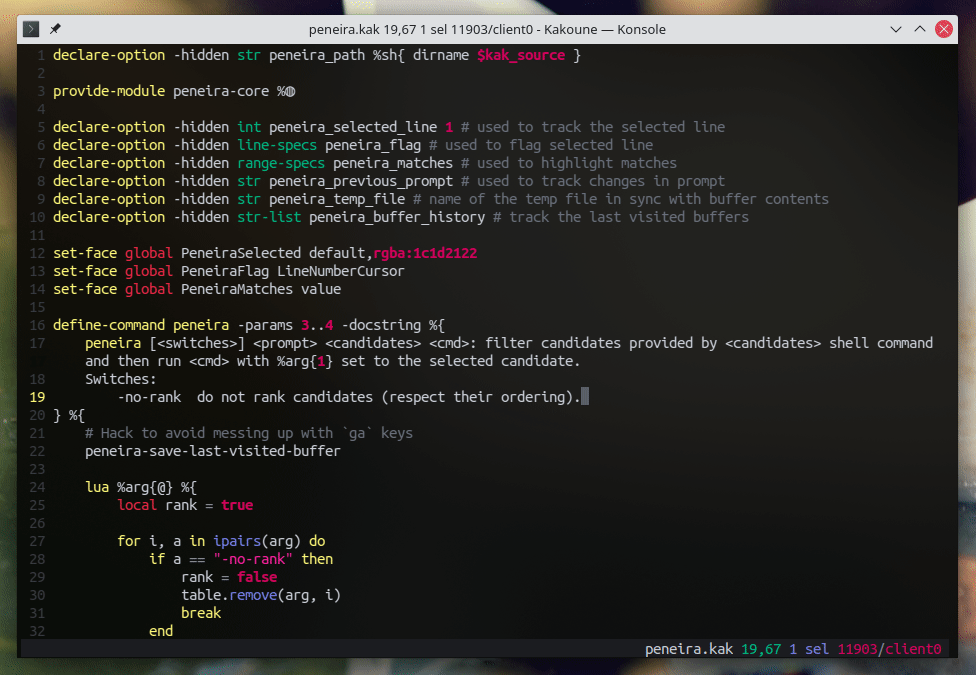Peneira is a fuzzy finder for the Kakoune editor. You can use it to write custom filters for candidates lists. You can also use its built-in filters, that allow you to select files in a directory, symbols in the current document, an so on.
It depends on the luar plugin. So make sure you have it installed first.
Peneira opens its panel in the focused client, and can have many panels working independently, one for each client.
You can search using multiple words separated by spaces. Each word matches from the beginning of the line.
Palenight:
Solarized-light:
You can use the peneira command to write a filter for yourself. For instance,
here is a simple buffers filter to go to a buffer in the buffer list:
define-command buffers %{
peneira 'buffers: ' %{ printf '%s\n' $kak_quoted_buflist } %{
buffer %arg{1}
}
}The peneira command expects 3 arguments:
- a text to show in the prompt;
- a shell command that, when executed, will generate a list of candidates (one per line);
- a block of Kakoune commands to execute after the user has selected a line.
Inside the commands block, the %arg{1} expansion refers to the selected line.
By default, peneira ranks the candidates according to an internal score,
showing first the results it thinks the user intended. If you want that it respects
the candidates order instead, you can pass the -no-rank switch:
peneira -no-rank 'buffers: ' %{ printf '%s\n' $kak_quoted_buflist } %{
buffer %arg{1}
}Peneira also comes with predefined filters you can use at will.
The peneira-symbols filter lists the symbols defined in the current file. You
can use it to quickly navigate in your code structure. It requires Universal
Ctags compiled with JSON support.
The peneira-lines filter lists lines in the current file. Use it to quickly go
to a specific line in your document.
The peneira-files filter lists files in the current directory, recursively.
If the switch -hide-opened is passed, it ignores already opened files,
removing them from the candidates list.
By default, peneira-files uses fd to get the list of files. You can change
that by editing peneira_files_command option, e.g.:
set-option global peneira_files_command "find ."Or even
set-option global peneira_files_command "rg --files"The peneira-local-files filter works like peneira-files, except that it uses
the directory of the currently edited file as the root directory.
If you have mru-files installed,
Peneira will detect it and automatically enable the peneira-mru filter, which
lists recently opened files in the subtree of the current working directory.
This way, you can easily jump to the most recently used files of the project you
are currently working on.
Hint: for this command to work best, try increasing the history size of the MRU plugin:
set-option global mru_files_max 100Remember peneira requires luar, so you must also install it. If you use plug.kak:
plug "gustavo-hms/luar" %{
plug "gustavo-hms/peneira" %{
require-module peneira
}
}Note that you need to require the peneira module for its commands to be
available.
Peneira is fast. It should perform well in most cases. However, since everything
happens synchronously, you may experience performance issues on large candidates
list. If that's the case, try configuring Luar to use luajit instead:
set-option global luar_interpreter luajitPeneira follows your colorscheme, so it should fit well in your configuration. But, if you want, you can customize some aspects of its appearance, but overwriting the following faces:
PeneiraSelected: used to highlight the selected line;PeneiraFlag: the appearance of the flag in the left side of the selected line;PeneiraMatches: used to highlight matched characters.PeneiraFileName: used to highlight the file name onpeneira-filesandpeneira-local-files.
For example:
set-face global PeneiraMatches +uiPeneira tries to remove line numbers when showing candidates, for a cleaner and
more immersive experience. But, due to how highlighters work on Kakoune, you must
name the number-lines highlighter (if you use it) exactly
window/number-lines, like so:
add-highlighter window/number-lines number-linesOr, say:
add-highlighter window/number-lines number-lines -separator ' ' -hlcursorOr even:
add-highlighter window/number-lines number-lines -separator ' ' -hlcursor -min-digits 3The important thing is that it's named window/number-lines, otherwise peneira
won't be able to remove it.
You can find a selection of some custom filters implemented by Marko Bauhardt here.
Many thanks to swarn for porting the fzy algorithm to lua.
